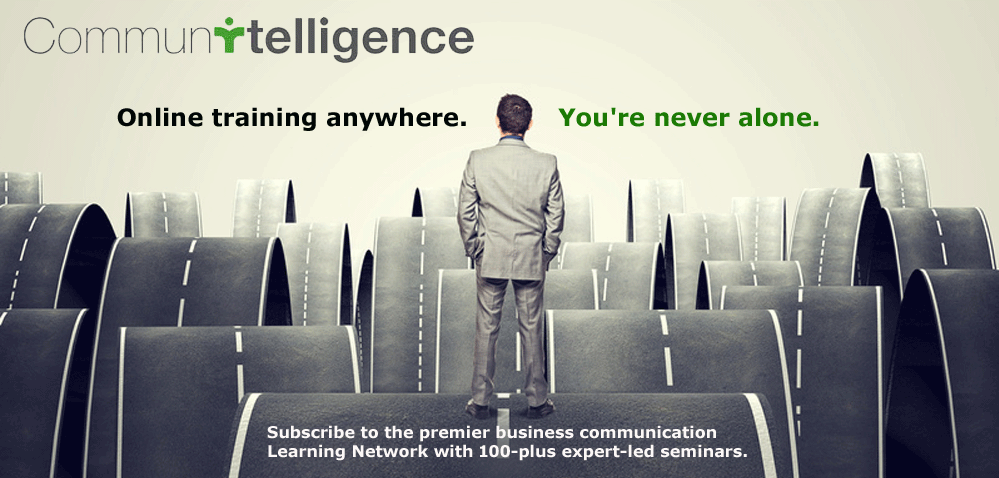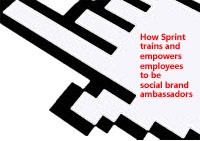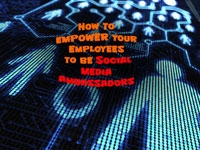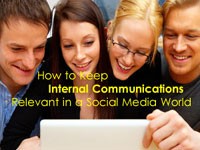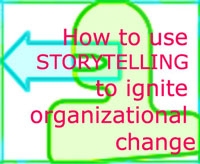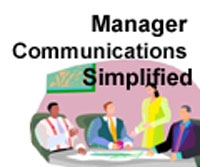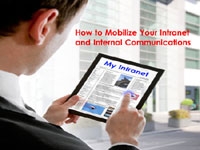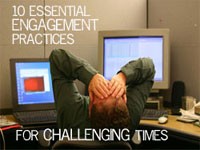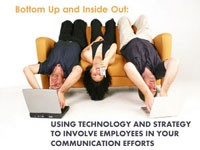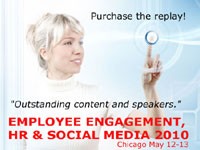 Ebay: Engaging Employees in Innovative Social Responsibility Projects
Ebay: Engaging Employees in Innovative Social Responsibility Projects
Amy Skoczlas Cole, Director, eBay Green Team
Amy Skoczlas Cole has worked at the nexus of business and sustainability for 15 years. As a thought leader in embedding authentic and strategic corporate responsibility programs into business operations, Amy has advised dozens of Fortune 500 companies. Her expertise covers a myriad of CSR issues, including greening operations and supply chains, creatively engaging customers and employees in environmental efforts, and partnering effectively with stakeholder communities.
Today, as the Director of the eBay Green Team at eBay Inc., Amy leads eBay’s efforts to engage their 88 million active users in making more sustainable buying choices that both can save consumers money as well as help protect the planet. Building off a grassroots efforts started by eBay’s own employees, the eBay Green Team is a community of over 100,000 people who have pledged to be smarter, greener buyers and sellers. Launched in March of 2008, the eBay Green Team has focused on raising awareness of the environmental benefits of using products that already exist today, and demonstrated how small actions can collectively add up to a big difference. Within eBay, the employee Green Team, which numbers over 2,000 employees in 23 countries, has spearheaded a number of projects to make eBay a greener company, from developing alternative commute programs to planting the first ever Fortune 500 company sponsored community garden. In her role, Amy also serves as on the company’s Sustainability Steering Committee, the executive body empowered by eBay CEO John Donahoe to set and implement eBay’s own operational commitments, including installing the city of San Jose, Calif.’s largest solar installation, building eBay’s newest building to LEED Gold standards, and most recently, announcing a commitment to reducing eBay’s greenhouse gas emissions by an ambitious 15% by 2012 over 2008.
Prior to joining eBay in early 2008, Amy was a co-founder and Vice President of Conservation International’s Center for Environmental Leadership in Business. For well over a decade, she engaged business leaders across a wide range of industries in creating strategic sustainability programs that benefited the global environment and the bottom line. In that role, she led multinational companies through the process of understanding, measuring, mitigating, and offsetting their environmental footprint and that of their supply chain – and in doing so, creating leadership brand enhancement and marketing opportunities. Amy applied this expertise during three years in Rio de Janeiro, Brazil, where she helped to found a Brazilian sustainability organization focused on engaging Brazilian companies in environmental efforts. A seasoned expert in crafting partnerships between the business and non-profit communities, Amy launched relationships with companies as diverse as Starbucks, Wal-Mart, McDonald’s, Vale do Rio Doce, Intel, Petrobras, Office Depot, Aracruz Celulose, Fiji Water and Bank of America.
Amy holds an MBA in marketing and finance from George Washington University, and a BA in Environmental Policy from Vanderbilt University. She is the author of various articles on business and sustainability issues, and a frequent speaker at national and international events, conferences and business schools. She is the associate editor of Footprints in the Jungle, a book about natural resource companies and the environment. Amy serves on the advisory boards of the Brazilian sustainability organization Instituto BioAtlantica, and Climate Earth, an enterprise carbon accounting start up. She lives in the San Francisco Bay area with her husband and son.
We are living in an era where social media not only impacts the way human beings interact with one another, but is influencing business decisions and customers’ perceptions of brands. By making employees confident in the fact that they can reach out to customers and by providing them with the necessary resources, you grow your external reach exponentially.
The Social Media Ninjas team at Sprint has done just that with their award winning employee advocacy program. Through the implementation of a training program that gives a fly-by of the corporation’s social media policy along with placing strong employee-facing support resources in a variety of channels, Sprint has created a program that drives employee engagement while protecting and enhancing its brand reputation.
Find out how internal communications is your best fuel for active advocacy and why a too formal social media policy can actually deter employees from joining your force. You’ll see how Sprint empowers its employees with real-time, company-approved, social media updates.
What You Will Learn:
- How to align internal communications and social media goals
- How to create a winning cross-functional team
- How to communicate a policy that works for advocates and Legal
- What motivates employees to participate voluntarily
- What resources you can put in place to optimize success
- Various channel to stay connected with your employee advocates
- The effect that extra reach can have on your organization
Presented by:
 Jennifer Sniderman, Group Manager – Employee Communications leads news, editorial and social media for enterprise-wide employee communications at Sprint. She specializes in interactive multimedia engagement programs which have garnered numerous awards. Jennifer is the co-creator of Sprint’s Social Media Ninja program leveraging employee advocacy to bolster the customer experience and improve Sprint’s corporate reputation. She provides counsel to Sprint’s Human Resources team to deliver leader-focused communications programs. Prior to joining Sprint, she was Assistant Vice President, Corporate Communications at Zurich Scudder Investments in Chicago, IL. Outside of work, she serves on the board of Chameleon Arts & Youth Development, a non-profit organization providing arts education for homeless and under-served children.
Jennifer Sniderman, Group Manager – Employee Communications leads news, editorial and social media for enterprise-wide employee communications at Sprint. She specializes in interactive multimedia engagement programs which have garnered numerous awards. Jennifer is the co-creator of Sprint’s Social Media Ninja program leveraging employee advocacy to bolster the customer experience and improve Sprint’s corporate reputation. She provides counsel to Sprint’s Human Resources team to deliver leader-focused communications programs. Prior to joining Sprint, she was Assistant Vice President, Corporate Communications at Zurich Scudder Investments in Chicago, IL. Outside of work, she serves on the board of Chameleon Arts & Youth Development, a non-profit organization providing arts education for homeless and under-served children.
 Sara Folkerts, Internal Social Media Manager is passionate about sharing, communicating, transparency and being open-minded. This has led her to her current job as a community manager and social media evangelist at Sprint. In addition to her role as community manager, Sara co-leads the Ninjas program at Sprint. Sara has presented on internal social media strategies at several conferences and at other companies. Where can you find her? On Twitter, of course! @saramiller.
Sara Folkerts, Internal Social Media Manager is passionate about sharing, communicating, transparency and being open-minded. This has led her to her current job as a community manager and social media evangelist at Sprint. In addition to her role as community manager, Sara co-leads the Ninjas program at Sprint. Sara has presented on internal social media strategies at several conferences and at other companies. Where can you find her? On Twitter, of course! @saramiller.
 Nic Lazowski, Communication Specialist is driven to engage employees and deliver information that will result in action. His role is centered around employee involvement and advocacy. As a Communication Specialist for Sprint, Nic is responsible for helping to drive employee education and advocacy through social media with other members of the Social Media Ninjas lead team.
Nic Lazowski, Communication Specialist is driven to engage employees and deliver information that will result in action. His role is centered around employee involvement and advocacy. As a Communication Specialist for Sprint, Nic is responsible for helping to drive employee education and advocacy through social media with other members of the Social Media Ninjas lead team.
Who Should Attend
- This webinar will cater to individuals who recognize the growing need for immediate and far-reaching contact with customers and potential customers. The information provided will allow you to start making your organization more nimble and approachable while improving reputation among customers.
Webinar attendee: “I appreciated all the information on how to put together a social media program for employees; the tools to use, the benefits of involving employees, how to set up the training program, etc.”
When it comes to humanizing your brand in social media, nobody can do it better than your employees. The 2010 Edelman Trust Barometer found “conversations with employees” remain one of the most credible sources of information about a company – ahead of news coverage, online search, or ads.
Pepsico is one company that has done the social media math. On Facebook alone, average users have 130 friends. Multiply that times Pepsico’s 300,000 employees and you have potentially millions of trusted conversations.
With that vision, Sharon McIntosh, senior director of global internal communications at PepsiCo, set out last year on a methodical process to empower employees to share their pride in the company on their social networks. In the process, the PepsiCo intranet has become a key platform for delivering and tagging the content that gets shared outside.
In this unique webinar, Sharon will share her journey to empower employees to be social media brand ambassadors. It has taken a balanced combination of tools, trust. Every company needs to figure this out – get a head start by attending this important webinar with your team.
What You Will Learn:
- Where you should start; who needs to be onboard
- How do you sell a social ambassador program to management, and employees
- How do you create a voluntary, online training program to educate employees on engaging in conversations that are authentic, responsible and interesting.
- How do you decide on the right content for employees to share – and a seamless process to make sharing easy
- How to make sure your social media policy doesn’t scare employees away
- What about incentives?
Presented by:
 Sharon McIntosh is senior director of Global Internal Communications for PepsiCo, overseeing the internal strategy and channels for the company’s nearly 300,000 associates. She previously worked in internal communications, corporate communications, marketing and media relations at a range of companies, including Sears, Waste Management and the Illinois Hospital Association. Connect with Sharon on Twitter: @mcintoshs.
Sharon McIntosh is senior director of Global Internal Communications for PepsiCo, overseeing the internal strategy and channels for the company’s nearly 300,000 associates. She previously worked in internal communications, corporate communications, marketing and media relations at a range of companies, including Sears, Waste Management and the Illinois Hospital Association. Connect with Sharon on Twitter: @mcintoshs.
Who Should Attend
- Social media is a team sport. Business professionals from all of these departments have a key role to play and should attend this webinar, preferably as a group: internal communications, HR ,marketing, corporate communications, public relations, customer service, legal and media relations.
“Excellent information … Great job Sharon!!”
Because they have access to the tools that personally connect them to their friends, family and peers, employees are jeopardizing their organization’s brand stature, reputation and competitive edge, often without realizing it. Without thinking, employees are sharing candid and damaging thoughts and updates — intentionally and unintentionally – that possess an uncanny ability to surface when least expected and be discovered by people who were never supposed to see them in the first place. And, perhaps accidentally, employees are sharing company secrets and information that should never see the light of day, and are doing so simply because they aren’t aware of the reach and power they have on the social web. This CD is aimed at helping corporate communication, marketing and PR professionals understand and lead their organization’s into the new world of online engagement, where the most operative rule may be simply: Don’t be stupid.
“I have attended a few “freebie” classes from other services, but found yours to be much more informative on the action side. Giving real life, no kidding ideas on how to do things.”
“Very informative and worthwhile. The speaker was articulate and knowledgeable and made me think.”
What You Will Learn:
- What are the absolute rules of engagement that all your employees should know
- Social media horror stories and some policies to avoid them
- Building marketing and service teams around social media programs
- Top 10 guidelines for social media participation
- Teaching employees to talk: it’s not only what you say, it’s how you say it
- Who answers what … the best processes to manage brand conversations
- New roles and responsibilities in the era of emerging media
- How to guide the rise and evolution of social media in your organization
Presented by:
 Brian Solis is globally recognized as one of most prominent thought leaders and published authors in new media. A digital analyst, sociologist, and futurist, Solis has influenced the effects of emerging media on the convergence of marketing, communications, and publishing. He is principal of FutureWorks, an award-winning New Media agency in Silicon Valley, and has led interactive and social programs for Fortune 500 companies, notable celebrities, and Web 2.0 startups. BrianSolis.com is ranked among the top of world’s leading business and marketing online resources.
Brian Solis is globally recognized as one of most prominent thought leaders and published authors in new media. A digital analyst, sociologist, and futurist, Solis has influenced the effects of emerging media on the convergence of marketing, communications, and publishing. He is principal of FutureWorks, an award-winning New Media agency in Silicon Valley, and has led interactive and social programs for Fortune 500 companies, notable celebrities, and Web 2.0 startups. BrianSolis.com is ranked among the top of world’s leading business and marketing online resources.
Brian’s newest book is Engage! The Complete Guide for Brands and Businesses to Build, cultivate and Measure Success in the New Web.
Solis along with co-author Deirdre Breakenridge released Putting the Public back in Public Relations in 2009. Published by Financial Times Press, the book has become a best seller and is highly regarded a must read by anyone in marketing, communications, and also journalism.
In concert with Geoff Livingston, Solis released Now is Gone in 2007, an early, award-winning book that helps businesses learn how to engage in Social Media. He has also written several ebooks on the subjects of Social Media, New PR, Customer Service, and Blogger Relations.
Social media poses some important new challenges for the internal communicator. On the one hand, the influx of new communications platforms has the potential of transforming how organizations work and communicate. On the other hand, as conversation channels expand and are available to everyone in an organization, how do you keep key messages from being diluted, and the corporate culture intact? Bottom line, what should the role of internal communications be in the age of social media? This panel continues the opening keynote discussion started at the Communitelligence Employee Engagement, HR & Social Media 2010 Conference in Chicago. Join this critical conversation and make sure you and your program stay relevant in this new age of internal communications.
Learning Topics:
- Key steps to ensure you and your department remain relevant and have the right impact.
- The role you should be playing: what is new and what remains the same
- Why clarity of message has become more critical with the decentralization of communication.
- What key skills communicators have that are the best antidote to obsolescence
- What are the best antidotes to obsolescence?
- “Excellent session! Worth the time investment!”
- Excellent high-level view”
- “I learned how important it is to know your intenal audience.”
- “The Avoiding Extinction piece by Cathi Killian was great.”
- “The greatest single benefit was learning about specific tools that were being using by other companies such as Yammer for “employee jams” and thinking like an intern by hiring a teenager.”
Presented by:

Gary F. Grates is President/Global Managing Director of Edelman Change and Employee Engagement, the organizational communications counseling practice of Edelman, the world’s largest independent public relations/communications counseling firm and the third largest overall. He has more than 25 years of corporate, marketing/brand, labor, and strategic communications experience with a particular expertise in change management/employee (internal) communications. Grates has counseled more than one hundred organizations including PepsiCo, Starbucks, Guardian, General Motors, Volvo, Nissan, Caterpillar, Shell, Visa International, Coca-Cola, Wal-Mart, British Airways, ITT, GE Healthcare, eBay, and Dell, to name a few. Prior to joining Edelman, he served as Vice President-Corporate Communications/North America at the General Motors Corporation. In this role, Grates was responsible for brand, product, media, internal, financial and public policy communications for GM’s North America Region, the largest in the company. He was also the global process leader for internal communications reporting to Chairman/CEO, G. Richard Wagoner, and a member of General Motors’ North American Strategy Board, the senior most governing body in North America. In addition, he was on the teaching staff at General Motors University (GMU) and selected to join the company’s exclusive Senior Executive Program – a leadership development program.
 Jill Feldon LaNouette is vice president of Internal Communications in the Public Affairs Department at Cardinal Health. In this capacity, she counsels senior executives in effective communication strategies and leads her team in developing and implementing communication plans and programs to support the company’s objectives. She also is responsible for crisis communications and issues management. Ms. LaNouette joined Cardinal Health in 2003 as director of Organizational Communication where she provided communication support on several major change initiatives and brand-building projects. In her 30 years of helping organizations effectively communicate with different constituencies, Ms. LaNouette has received numerous awards for marketing and communications from various organizations including the Gold Quill from the International Association of Business Communications and the Silver Anvil from the Public Relations Society of America. She has worked with companies from healthcare to Hollywood, including Victoria’s Secret, The Procter & Gamble Company, Kaiser Permanente, Lucasfilm Ltd., and public radio. Also Jill is a free-lance writer and consultant, has been published in several publications, and worked as a sports reporter for the Cincinnati Enquirer.
Jill Feldon LaNouette is vice president of Internal Communications in the Public Affairs Department at Cardinal Health. In this capacity, she counsels senior executives in effective communication strategies and leads her team in developing and implementing communication plans and programs to support the company’s objectives. She also is responsible for crisis communications and issues management. Ms. LaNouette joined Cardinal Health in 2003 as director of Organizational Communication where she provided communication support on several major change initiatives and brand-building projects. In her 30 years of helping organizations effectively communicate with different constituencies, Ms. LaNouette has received numerous awards for marketing and communications from various organizations including the Gold Quill from the International Association of Business Communications and the Silver Anvil from the Public Relations Society of America. She has worked with companies from healthcare to Hollywood, including Victoria’s Secret, The Procter & Gamble Company, Kaiser Permanente, Lucasfilm Ltd., and public radio. Also Jill is a free-lance writer and consultant, has been published in several publications, and worked as a sports reporter for the Cincinnati Enquirer.
 Cathi Killian is Vice President, Internal Communications at Walt Disney Company. In her role leading internal communications and corporate responsibility, Cathi is responsible for enhancing the reputation of the Walt Disney Parks and Resorts through strategies driven by excellence in internal communications, stakeholder engagement and community outreach. She develops the strategic plan for Walt Disney Parks and Resorts internal communications, which leverages communication to reinforce our values and brand and foster the visibility of executive leadership. She works with the internal communications teams at each business unit in taking an integrated approach to delivering relevant information to inform, motivate and engage Cast Members, Crew Members and Imagineers. Additionally, she leads our efforts focused on issues management and stakeholder engagement to identify issues, track trends and understand the impacts to our business, while developing allies that support our goals.
Cathi Killian is Vice President, Internal Communications at Walt Disney Company. In her role leading internal communications and corporate responsibility, Cathi is responsible for enhancing the reputation of the Walt Disney Parks and Resorts through strategies driven by excellence in internal communications, stakeholder engagement and community outreach. She develops the strategic plan for Walt Disney Parks and Resorts internal communications, which leverages communication to reinforce our values and brand and foster the visibility of executive leadership. She works with the internal communications teams at each business unit in taking an integrated approach to delivering relevant information to inform, motivate and engage Cast Members, Crew Members and Imagineers. Additionally, she leads our efforts focused on issues management and stakeholder engagement to identify issues, track trends and understand the impacts to our business, while developing allies that support our goals.
The best way to communicate with people you are trying to lead is very often through a story.
More and more organizations are realizing that stability and predictability are no longer reasonable assumptions. In fact, the number one problem of today’s managers is the difficulty in getting their organizations to adapt to a competitive environment that is neither stable nor predictable. Yet while change is irresistible, the organization often seems immovable.
Drawing on his experience as program director of Knowledge Management at the World Bank from 1996-2000 and his work with many of the top organizations in the world, Steve Denning shows how to identify and craft a springboard story; i.e., a story that will spark action. Using a simple template, you will be equipped to get started on crafting your own springboard stories.
What you will learn:
- The importance of storytelling
- Appropriate situations for telling stories
- Why storytelling can handle leadership challenges for which conventional command-and-control techniques are impotent
- The essential ingredients of a springboard story — i.e., a story to communicate a complex idea and galvanize action
- How and why storytelling can communicate complex ideas, and why stories are so persuasive
- How to find and craft springboard stories for your organization
- How to use storytelling to ignite your career by becoming an authentic leader
- A 10-point template for crafting your stories
- Eight types of stories that you can put to work for you
- How storytelling changed the way the World Bank shared knowledge
Who should purchase:
This exceptional learning opportunity is designed for managers and professionals in:
- Corporate Communications
- Marketing
- Advertising
- Internal Communications
- Public Affairs
- Public Relations
- Organizational Development
- Human Resources
- Corporate Strategy and Development
- Senior Management
- Anyone, anywhere in an organization
It’s also an important addition to the offerings of college/university libraries and bookstores.
Instructor:
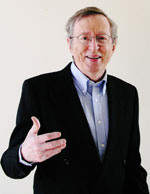 Steve Denning is the former program director of Knowledge Management at the World Bank. He now works with organizations in the U.S., Europe, Asia and Australia on knowledge management and organizational storytelling.
Steve Denning is the former program director of Knowledge Management at the World Bank. He now works with organizations in the U.S., Europe, Asia and Australia on knowledge management and organizational storytelling.
Steve is the author of several books on organizational storytelling, including:
- The Leader’s Guide to Storytelling: Mastering the Art and Discipline of Business Narrative (Jossey-Bass in April 2005).
- Squirrel Inc: A Fable of Leadership Through Storytelling (Jossey-Bass, 2004), a fable that elaborates seven different kinds of organizational storytelling
- The Springboard: How Storytelling Ignites Action in Knowledge-Era Organizations (Butterworth Heinemann, 2000), which describes how storytelling was used as a powerful tool for organizational change and knowledge management at the World Bank
Steve was born and educated in Sydney, Australia. He studied law and psychology at Sydney University and worked as a lawyer in Sydney for several years. He did a postgraduate degree in law at Oxford University in the U.K. before joining the World Bank, where held a number of positions from 1996 to 2000.
In 2000, Steve was named as one of the world’s “10 Most Admired Knowledge Leaders” (Teleos). In 2003, he was ranked as one of the world’s Top Two Hundred Business Gurus: Davenport & Prusak, “What’s The Big Idea?” (Harvard, 2003). In 2005, his book, The Leader’s Guide to Storytelling, was selected by the Innovation Book Club as one of the 12 most important books on innovation in the last few years.
Steve is a Senior Fellow at the James MacGregor Burns Leadership Academy at the University of Maryland.
If employees weren’t getting fired for what they are saying and doing on social media channels, your organization might simply pass on writing a social media policy, and this webinar. But they are, and a sound social media policy is a company’s first line of defense against risk in social media marketing. Which means you must embark on the delicate balancing act that is required to write or evolve your organization’s social media policy. If you policy is too complex or restrictive, you will scare employees and diminsh the significant business value that social media offers. And if you’re policy is too lax, or nonexistent, some of your employees may wind up as another social media horror story, fired for doing something they shouldn’t have. In this important webinar, our expert panel will share their experiences and advice on writing and enforcing a social media policy that does more good than harm. Attend and put your process ahead of policy.
“Gave me a lot to think about and actionable items for my organization.”
Learning Topics:
- Why your organization needs a social media policy
- What’s the best process to assure your policy is positive?
- What are the must-have elements of a social media policy?
- Do you need one policy, or many?
- What departments should be involved in policy creation and enforcement?
- What are some excellent policy writing resources you should review?
Presented by:
 Chris Boudreaux is SVP of Management Consulting for Converseon. He created SocialMediaGovernance.com to provide tools and resources for leaders and managers who want to get the most from their social media and social application investments. Chris leads teams of business and technology professionals to improve their Marketing, Sales and Customer Service capabilities, from strategy through execution. In the past, he led product development and business transformation initiatives at Fortune 100 companies and online start-ups, and I am a former Naval Officer.
Chris Boudreaux is SVP of Management Consulting for Converseon. He created SocialMediaGovernance.com to provide tools and resources for leaders and managers who want to get the most from their social media and social application investments. Chris leads teams of business and technology professionals to improve their Marketing, Sales and Customer Service capabilities, from strategy through execution. In the past, he led product development and business transformation initiatives at Fortune 100 companies and online start-ups, and I am a former Naval Officer.
 Jennifer Cisney, Chief Blogger and Social Media Manager, has been with Eastman Kodak for eleven years, resulting a broad knowledge of the various businesses and in depth experience with the corporate website, kodak.com. Her contributions to Kodak’s online experience have been inspirational photography, design expertise and creative content. She helped create and now manages the corporate blogs. After launching Kodak’s social media initiatives, she oversees Kodak’s presence on social media sites Facebook, YouTube, Twitter and Flickr.
Jennifer Cisney, Chief Blogger and Social Media Manager, has been with Eastman Kodak for eleven years, resulting a broad knowledge of the various businesses and in depth experience with the corporate website, kodak.com. Her contributions to Kodak’s online experience have been inspirational photography, design expertise and creative content. She helped create and now manages the corporate blogs. After launching Kodak’s social media initiatives, she oversees Kodak’s presence on social media sites Facebook, YouTube, Twitter and Flickr.
 Laurie Buczek is Platform Vision Team Manager & Social Media Strategistwithin Intel Corporation’s Digital Marketing organization. Prior to joining Digital Marketing, Laurie spent over two years as the Social Computing Program Manager where she was responsible for the major enterprise wide strategy & implementation of social computing for employees to connect & collaborate internally. Laurie began her social media journey three years ago while blazing a new trail for online marketing efforts by helping to launch & manage the first external social media community for Intel. Laurie’s work has been published and showcased across the industry. She is also a member of the 2.0 Adoption Council and Social Media Business Council. In addition to the experience within the social media space, Laurie has almost 18 years in high technology working in marketing, consulting and sales. In her life before Intel, Laurie worked for Forrester Research and Gateway, Inc.
Laurie Buczek is Platform Vision Team Manager & Social Media Strategistwithin Intel Corporation’s Digital Marketing organization. Prior to joining Digital Marketing, Laurie spent over two years as the Social Computing Program Manager where she was responsible for the major enterprise wide strategy & implementation of social computing for employees to connect & collaborate internally. Laurie began her social media journey three years ago while blazing a new trail for online marketing efforts by helping to launch & manage the first external social media community for Intel. Laurie’s work has been published and showcased across the industry. She is also a member of the 2.0 Adoption Council and Social Media Business Council. In addition to the experience within the social media space, Laurie has almost 18 years in high technology working in marketing, consulting and sales. In her life before Intel, Laurie worked for Forrester Research and Gateway, Inc.
There’s a new social media world order and its tentacles are reaching inside organizations.
Employees expect to connect and have conversations with coworkers as easily as they do with old high school chums on Facebook. Meanwhile, corporate communication, HR, IT and leadership are struggling with how to unleash social tools in a way that amps up communication, collaboration and employee engagement.
Dan Pontefract, head of Learning & Collaboration at TELUS, believes strongly that traditional management styles are obsolete and that organizations need to adopt a collaborative, open leadership approach, one that engages and empowers all employees. This inevitably means social software.
In this webinar, you will learn from someone who’s paving a trail through this new terrain. Pontefract, author of the new book, Flat Army, will give us a tour of the TELUS intranet and tell how he has driven a philosophical and cultural shift in the way TELUS communicates, collaborates and learns.
What You Will Learn:
- The importance of social tools to an organization’s culture, leadership programs and learning model
- How leaders can provide context, content and a vehicle for conversation through social tools
- Specific examples of social tools in leadership action
Who Should Attend
Social business is a team sport. Business leaders from many disciplines have a role to play and should attend this webinar, preferably as a group:
- internal communications, HR , learning, marketing, corporate communications, public relations, customer service, legal and media relations.
Presented by:
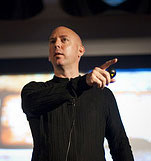 Dan Pontefract is a passionate leader in social business, Enterprise 2.0, learning, leadership and collaboration. He is author of Flat Army: Creating a Connected and Engaged Organization.
Dan Pontefract is a passionate leader in social business, Enterprise 2.0, learning, leadership and collaboration. He is author of Flat Army: Creating a Connected and Engaged Organization.
As head of Learning & Collaboration atTELUS, Dan championed the introduction of the TELUS Leadership Philosophy (TLP), an open and collaborative-based leadership framework for all 40,000+ TELUS team members. He further championed the use and deployment of collaborative technologies to complement both the learning and leadership frameworks. In 2010, Pontefract was acknowledged as a Vanguard Award winner and is a two-time winner of the Corporate University “Best in Class Awards” for the Leader of the Year. In 2012, SkillSoft awarded him the “Learning Leader of the Year” for his work at TELUS. Pontefract holds a Masters of Business Administration, a Bachelor’s of Education, and multiple industry certifications and accreditations. His first book, Flat Army: Creating a Connected and Engaged Organization publishes in March, 2013.
Practical techniques any manager can use to motivate new behaviors and deliver better business results
Why are managers employees’ preferred source of communication? Because employees crave information that affects their day-to-day lives – information that only their managers can provide. Andy Szpekman, president of AHS Communications, outlines what managers can do to meet employee expectations, become better communicators and be more successful managers.
You’ll learn the four competencies every manager needs, the type of communication employees demand, and proven ways to change people’s attitudes and behaviors. You’ll leave the session with a solid understanding of what separates outstanding managers from the rest, as well as useful tips and simple tools any manager can apply immediately on the job. Whether you manage others or advise those who do, this teleseminar will help you engage your organization’s employees to deliver their best work.
Learning Topics:
- Six things every manager needs to do well
- What to look for when gathering employee feedback
- How to deliver a tough message effectively
- Stupid ideas about communication
- How to convey information, field challenges and brainstorm solutions – in under 15 minutes
Andy answers real-world questions on:
- Companies that are doing a good job at training their managers to be better communicators
- How to effectively measure whether a manager is communicating well
- advice and techniques to help managers be more open and forthright in their communications, even when they may fear repercussions from their management
- Specific advice for how to handle situations in non-public organizations, where laws prevent communications to be less timely than we would like it to be
- How to focus on listening rather than figuring out what you’re going to say when the other person stops talking
- the “huddle technique” to brainstorm solutions right after the change or problem has been communicated to employees
- The 360-degree survey technique to assess the effectiveness of manager communications
- The wisdom of setting up regular employee communication time
Who should purchase:
-
Line managers
-
Functional managers
-
Internal communicators
-
Corporate communicators
-
HR managers
-
Change managers
-
Internal marketers
-
College/university libraries and bookstores
Instructor:
 Andy Szpekman provides HR and communication research, strategies and tools to improve business performance. His clients include Bank of America, BC Hydro, Cardinal Health, McKinsey & Co., Microsoft, News Corporation, Scholastic and Wachovia.
Andy Szpekman provides HR and communication research, strategies and tools to improve business performance. His clients include Bank of America, BC Hydro, Cardinal Health, McKinsey & Co., Microsoft, News Corporation, Scholastic and Wachovia.
Earlier in his career, he led HR communication at Bank of America, served as communications manager for a global division of Warner-Lambert, and was a senior HR and communication consultant with Brecker & Merryman, Inc.
Andy is active in the Council of Communication Management and a former officer of the Metropolitan New York Association of Applied Psychology. His work has been featured in national news and business publications and leading trade journals. He holds a B.A. in psychology from William Paterson University and an M.A. in organizational psychology from Columbia University.
 Employee Engagement: Mobilizing For a Cause
Employee Engagement: Mobilizing For a Cause
Laura Rodormer, Director of Corporate Citizenship, McKesson
Mobile is changing everything, including what employees expect from your intranet and internal communications. As employees increasingly see rapid improvements in their mobile user experiences on the open Internet, they’ll demand it from their organizations as well. Now Google has further emphasized its commitment to ‘Mobile First’ with the acquisition of Motorola Mobility. This could be a major game changer as other companies react to this challenge.
Now is the time to position your organization to take advantage of mobile technologies in 2012 to make better connections with employees working away from their desks for extended periods. Join Martin White, noted intranet and mobile expert, and Terry Pulliam, Director of Communications at Sprint, in this webinar to help communicators, HR and IT professionals start mapping out a sensible mobile strategy. Hear what’s working, how one leading intranet is tackling the challenges of mobile, and what you should be thinking about right now.
What You Will Learn:
- What mobile isn’t (the desktop only smaller)
- Where to start – what do employees really want?
- Making a business case for investing in mobile
- Who should own mobile service development inside the enterprise
- The technology and governance of mobile collaboration
- Why mobile intranet design is only the tip of the iceberg
- The trade-offs between web apps and native apps
- Key considerations when choosing your mobile strategy
- Lessons to be learned from best-practice mobile intranets
Presented by:
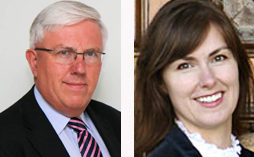 Martin White is a leading European authority on intranets, workshop leader, columnist, book author, professor and Managing Director of Intranet Focus Ltd. Over the ten years has undertaken assignments in North America, Europe and the Middle East as well as in the UK. He has extensive business experience in the USA, having first visited in 1975. In the early 1980s he worked for Creative Strategies International, Cupertino, and from 1984 to 1989 he was a senior manager at International Data Corporation, Boston. He has keynoted a number of US conferences, including the Enterprise Search Summit in 2004 and in 2008. He is the author of The Content Management Handbook, Making Search Work, and Successful Enterprise Search Management (with Stephen Arnold).
Martin White is a leading European authority on intranets, workshop leader, columnist, book author, professor and Managing Director of Intranet Focus Ltd. Over the ten years has undertaken assignments in North America, Europe and the Middle East as well as in the UK. He has extensive business experience in the USA, having first visited in 1975. In the early 1980s he worked for Creative Strategies International, Cupertino, and from 1984 to 1989 he was a senior manager at International Data Corporation, Boston. He has keynoted a number of US conferences, including the Enterprise Search Summit in 2004 and in 2008. He is the author of The Content Management Handbook, Making Search Work, and Successful Enterprise Search Management (with Stephen Arnold).
Terry Pulliam is communications director at Sprint, where she guides the strategic direction of the company intranet and social media sites, employee communications editorial strategy and creative media services.
Terry and her team have received numerous IABC Gold, Silver and Bronze Quill awards, and her work has been recognized in industry forums including “Intranet of the Year” from the International Quality and Productivity Center, and CIO “50/50 Award” for top 50 intranets. She is a past president of the Kansas City chapter of the International Association of Business Communicators.
Previously, Terry was director of internal communications for Sprint’s wireless division. She has also worked for a national association and advertising agency J. Walter Thompson. She holds a journalism degree from the University of Missouri – Columbia.
Who Should Attend
- Intranet managers, internal communications, IT, human resources, public relations, corporate affairs, media relations, and issues management.
“Great overview.”
“Provoked thought on avenues and alternatives I hadn’t considered for addressing security concerns.”
Internal communications measurement is fast becoming a critical skill for communicators and the profession as a whole. Knowing the basics of research, analysis and reporting are essential to the ability of internal communication to deliver business results that drive corporate performance. Using research the right way will help you continuously improve programs and earn the respect of leadership.
Recognizing that this is not a shallow topic, and measuring internal communications is different than measuring PR, Communitelligence has invited two of North America’s premier experts to walk us through the most critical insights and tactics that all communicators need to know. This webinar won’t make you an instant measurement expert, but it will school you enough to shift your role and amp up your department’s output to the next level.
What You Will Learn:
- The new normal: how leading companies are measuring and reporting their internal comms programs today
- Starting with the basics: how to set measureable objectives
- Moving the needle: a scientific approach to isolating the effect of communication on employee behavior
- How to conduct research and plan your goals and program accordingly
- Aiming for the holy grail: some simple ways to measure communication’s effect on employee engagement
- Asking the wrong questions: the 10 biggest measurement mistakes
- How to analyze basic data to find actionable insights
Presented by:
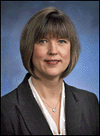 Angela Sinickas ABC is author of How to Measure Your Communication Programs (now in its third edition), and chapters in several books. Her 140 articles in professional journals can be found on her website. Her pioneering work in measuring the effectiveness of organizational communication has led to consulting assignments and speaking engagements in 29 countries. Her work has been recognized with 17 international-level Gold Quill Awards from IABC, including two for her website, and a Bronze Anvil from PRSA for her measurement newsletter.
Angela Sinickas ABC is author of How to Measure Your Communication Programs (now in its third edition), and chapters in several books. Her 140 articles in professional journals can be found on her website. Her pioneering work in measuring the effectiveness of organizational communication has led to consulting assignments and speaking engagements in 29 countries. Her work has been recognized with 17 international-level Gold Quill Awards from IABC, including two for her website, and a Bronze Anvil from PRSA for her measurement newsletter.
 Claire Watson, ABC, APR is president of Words with Wings . . . where strategy meets inspiration, and a master communication strategist with a passion for excellent communication. Her work has earned 30 international and over 150 national and provincial awards of excellence. She has managed multi-faceted communication programs for the federal and provincial (Saskatchewan) governments, and for private sector companies. Teacher, speaker, author, mentor and a consummate professional, she has taught Public Relations and Communication Management for the University of Regina. Her broad range of experience includes the full range of integrated employee, marketing and communication activities. Claire has worked with IABC at the chapter, regional and international levels for 17 years. She was the recipient of the 2012 IABC Chairman’s Award for global leadership in communication and service to the Association.
Claire Watson, ABC, APR is president of Words with Wings . . . where strategy meets inspiration, and a master communication strategist with a passion for excellent communication. Her work has earned 30 international and over 150 national and provincial awards of excellence. She has managed multi-faceted communication programs for the federal and provincial (Saskatchewan) governments, and for private sector companies. Teacher, speaker, author, mentor and a consummate professional, she has taught Public Relations and Communication Management for the University of Regina. Her broad range of experience includes the full range of integrated employee, marketing and communication activities. Claire has worked with IABC at the chapter, regional and international levels for 17 years. She was the recipient of the 2012 IABC Chairman’s Award for global leadership in communication and service to the Association.
“Participating in this webinar was a wonderful experience that is worth a repeat!”
Email is now so embedded into our daily lives that we think nothing of it. We need to, however, because the Internet’s original “killer app” is starting to kill employee productivity and focus. Consider these findings:
- The average business executive spends two hours a day on e-mail
- 70% of employees react to emails within 6 seconds of them arriving
- The number of e-mail messages sent is rising dramatically — by some estimates, by more than 20% a year
- Almost one in five emails was copied unnecessarily to staff members other than the main recipient
- The use – and, particularly, the misuse – of email costs businesses up to $16,000 per employee per year
This webinar is aimed at arming attendees with the insight and ideas to help them get a lot smarter about using email, for themselves and their organizations. Don’t miss this rare chance to learn the latest thinking and best practices from two of the foremost global experts on this topic.
What you will learn:
- The state of workplace email today, and why communication professionals need to get activated in the battle
- Why this problem is so hard to solve, and what you must do to overcome the hurdles
- How to develop a centralized strategy to minimize internal communication emails
- How to launch an effective email etiquette program that will make everyone in your organization happier about their inbox.
- Tools, tips and tricks to outsmart your inbox
“I learned that the biggest levers we can pull to change our email situation are behavior based, not technology based.”
“I didn’t realize how much research exists on this topic.”
Who should attend
Anyone who would like to learn how to better conquer their daily email war, and help their organization feel less pain and angst from their inbox. This webinar is especially suitable for professionals in the areas of internal communications, marketing and public relations.
Presented by:
 David Grossman, ABC, APR, Fellow PRSA, is both a teacher and student of effective communication. He is one of America’s foremost authorities on communication and leadership inside organizations. A much sought-after consultant and speaker, David is often quoted in media, providing expert commentary and analysis on employee and leadership issues. Most recently, he was featured on “NBC Nightly News” about e-mail overload, and in the Chicago Tribune. David is Founder and CEO of The Grossman Group, an award-winning Chicago-based communications consultancy focused on organizational consulting, strategic leadership development and internal communications. His most recent books are You Can’t NOT Communicate: Proven Solutions That Power the Fortune 100, (now in its second edition), and its follow up You Can’t NOT Communicate 2: More Proven Solutions That Power the Fortune 100.
David Grossman, ABC, APR, Fellow PRSA, is both a teacher and student of effective communication. He is one of America’s foremost authorities on communication and leadership inside organizations. A much sought-after consultant and speaker, David is often quoted in media, providing expert commentary and analysis on employee and leadership issues. Most recently, he was featured on “NBC Nightly News” about e-mail overload, and in the Chicago Tribune. David is Founder and CEO of The Grossman Group, an award-winning Chicago-based communications consultancy focused on organizational consulting, strategic leadership development and internal communications. His most recent books are You Can’t NOT Communicate: Proven Solutions That Power the Fortune 100, (now in its second edition), and its follow up You Can’t NOT Communicate 2: More Proven Solutions That Power the Fortune 100.
 Nathan Zeldes is an independent organizational consultant, a role he has adopted in 2009 after a 26 year career at Intel corporation. A physicist morphed into an organizational change agent, Nathan is recognized as a global thought leader in the search for improved knowledge worker productivity. Having enjoyed a long career as a manager and principal IT engineer at Intel, he now helps organizations to solve core problems at the intersection of technology and human behavior. His experience includes initiating and leading optimal corporate technology adoptions in the domains of Information Technology, Internet applications, Innovation Management, Remote and Distributed work, and Knowledge Management. A key component in Nathan’s work is mitigating the problem of email and information overload which is harming the productivity and quality of life of Knowledge Workers everywhere. He had identified the problem 17 years ago, and since then he’s developed and deployed original solutions at Intel and other companies, and has founded the Information Overload Research Group to further its study. He is also active at present in the areas of Social Media adoption, Technical Leadership development, and the multi-generational workplace of the future. Nathan’s blog is Challenge Information Overload.
Nathan Zeldes is an independent organizational consultant, a role he has adopted in 2009 after a 26 year career at Intel corporation. A physicist morphed into an organizational change agent, Nathan is recognized as a global thought leader in the search for improved knowledge worker productivity. Having enjoyed a long career as a manager and principal IT engineer at Intel, he now helps organizations to solve core problems at the intersection of technology and human behavior. His experience includes initiating and leading optimal corporate technology adoptions in the domains of Information Technology, Internet applications, Innovation Management, Remote and Distributed work, and Knowledge Management. A key component in Nathan’s work is mitigating the problem of email and information overload which is harming the productivity and quality of life of Knowledge Workers everywhere. He had identified the problem 17 years ago, and since then he’s developed and deployed original solutions at Intel and other companies, and has founded the Information Overload Research Group to further its study. He is also active at present in the areas of Social Media adoption, Technical Leadership development, and the multi-generational workplace of the future. Nathan’s blog is Challenge Information Overload.
An engaged workforce is a cultural transformation which must stand the test of time, in both boom and recessionary times. This presentation reinforces the key steps necessary to sustain an engaged culture, improve business results, maintain credibility with employees, while also reinforcing that success involves the “mutual commitment” of both leadership and employees. Bob’s 10 essential steps of engagement are culled from his years of experience working as an internal practitioner, leading engagement initiatives that transformed corporate cultures. These best practices will help firms minimize disengagement while also putting in place steps to maximize employee engagement – the key to capturing discretionary effort. Having been in the trenches in other economic downturns, the presenter will reinforce the need to stay the course, while reminding all that “employees are watching” and “words” alone will not foster an engaged workforce.
- “I learned a lot and got some great ideas. It was very thought provoking.”
- “Good information that I can share with my colleagues.”
- “Good tools and resources sited. Good to hear of a systematic approach.”
Learning Topics
- 10 Key Engagement Steps To Drive Business Results
- Specific Data to make a Business Case for Engagement
- Practical Tools to help in your engagement efforts
- How to show a ROI on your Engagement Efforts
Questions That Will Be Answered
- How can leaders deal with the growing ranks of the disengaged
- How can I convince my leadership team that we need to focus on employee engagement
- How can I prove that employee engagement drives business results
Who Should Attend
- HR and OD professionals, along with other key individuals responsible for human capital development
- Communication professionals
- Key executives and other professionals responsible for “leading people’
Presented by:
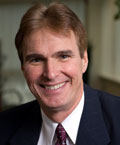 Bob Kelleher is the founder and CEO of The Employee Engagement Group (www.EmployeeEngagment.com), and is a noted speaker, thought leader, and consultant on the subjects of Employee Engagement, Workforce Trends, and Leadership, and often travels the globe giving presentations to and consulting with leadership teams. Having been an internal practitioner for many years, Bob’s practical approach and willingness to share best practices (“been there / done that”) have proven to be a winning formula for audiences throughout the world. Before opening his own consulting business, Bob was the Chief Human Capital Officer for AECOM, a Fortune 500 global professional services firm, with 45,000 employees located in 450 offices throughout the world. Before joining AECOM in 2005, Bob worked for ENSR International, a Massachusetts based 2,300 employee environmental consulting firm with 70 worldwide offices, and now a subsidiary of AECOM. While at ENSR, Bob was Executive Vice President and Chief Operating Officer and spearheaded ENSR’s award winning Employee Engagement programs and initiatives. Bob actively participates in various industry roundtables and associations, and is often a guest speaker on Employee Engagement, Workforce Trends, and Leadership at industry conferences and annual strategic planning meetings. He is a featured “Thought Leader” on Boston.com / Monster.com within the area of Employee Engagement. He holds a BS in Education and an MBA.
Bob Kelleher is the founder and CEO of The Employee Engagement Group (www.EmployeeEngagment.com), and is a noted speaker, thought leader, and consultant on the subjects of Employee Engagement, Workforce Trends, and Leadership, and often travels the globe giving presentations to and consulting with leadership teams. Having been an internal practitioner for many years, Bob’s practical approach and willingness to share best practices (“been there / done that”) have proven to be a winning formula for audiences throughout the world. Before opening his own consulting business, Bob was the Chief Human Capital Officer for AECOM, a Fortune 500 global professional services firm, with 45,000 employees located in 450 offices throughout the world. Before joining AECOM in 2005, Bob worked for ENSR International, a Massachusetts based 2,300 employee environmental consulting firm with 70 worldwide offices, and now a subsidiary of AECOM. While at ENSR, Bob was Executive Vice President and Chief Operating Officer and spearheaded ENSR’s award winning Employee Engagement programs and initiatives. Bob actively participates in various industry roundtables and associations, and is often a guest speaker on Employee Engagement, Workforce Trends, and Leadership at industry conferences and annual strategic planning meetings. He is a featured “Thought Leader” on Boston.com / Monster.com within the area of Employee Engagement. He holds a BS in Education and an MBA.
Think of any great presenter—Steve Jobs, Richard Branson or Jeff Bezos—and it won’t take you long to figure out that they are also master storytellers. Storytelling is increasingly becoming a “must-have” skill for business leaders, but you still won’t find it on any MBA curriculum.
This webinar will give you a deeper understanding why story is such a powerful strategic tool and how it can be used in the business setting. We will show you a specific “before and after” example of how a case study was transformed into powerful case story for pitching new business. We’ll also give you some key tips on how to craft and use stories to make an impact in your next big presentation or business meeting.
“As an ex-newspaper reporter, I have always recognized the value of storytelling. This webinar helped provide a great framework for bringing people into the important strategic and cultural stories I need to be communicating.”
What You Will Learn:
- The neuroscience and psychology that proves why stories work
- Tips for transforming run-of-the-mill presentation content into powerful stories that engage audiences
- How storytelling can be used as strategic tool to build chemistry and trust with others
- How even data-driven presentations can benefit from the art of storytelling
- The difference between conventional storytelling and strategic storytelling for business purposes. Please bring your ideas and questions!
Who Should Attend
This webinar is primarily aimed at those in the early stages of implementing or learning about strategic business storytelling, although it will also help more advanced practioners to focus their efforts. It is especially suitable for:
- Small and mid-sized business leaders
- Corporate executives who are new to storytelling
Presented by:
 Jane Praeger is a former documentary filmmaker and faculty member in Columbia University’s M.S. program in Strategic Communications and Communications Practice where she teaches presentation design and delivery, communications strategy, strategic storytelling and writing. She founded Ovid Inc. in 1992 to help people find their public voices. Since then, she has provided speech, presentation, media training and customized workshops, to corporations such as Nickelodeon, Coach, Estee Lauder, McKinsey & Company, Euro RSCG Worldwide, as well as other technology, entertainment, and consulting firms. On the non-profit side, she has worked with Open Society Foundations, Doctors Without Borders, Atlantic Philanthropies, The Ms. Foundation, Harvard University, Columbia University Business School, and many others.
Jane Praeger is a former documentary filmmaker and faculty member in Columbia University’s M.S. program in Strategic Communications and Communications Practice where she teaches presentation design and delivery, communications strategy, strategic storytelling and writing. She founded Ovid Inc. in 1992 to help people find their public voices. Since then, she has provided speech, presentation, media training and customized workshops, to corporations such as Nickelodeon, Coach, Estee Lauder, McKinsey & Company, Euro RSCG Worldwide, as well as other technology, entertainment, and consulting firms. On the non-profit side, she has worked with Open Society Foundations, Doctors Without Borders, Atlantic Philanthropies, The Ms. Foundation, Harvard University, Columbia University Business School, and many others.
 Heather Thomas is a business builder who has clocked countless hours performing “on stage” in the presentation spotlight. She earned her stripes in the agency world, working at Agency.com, Modem Media and the digital agency Critical Mass where she built their Business Development and Corporate Marketing practice from the ground up, ultimately tripling their revenue. After crafting hundreds of high-stakes presentations to win clients such as Procter & Gamble, NASA and Dell, Heather joined Ovid in 2010 to pass what she learned about persuasive presentations to others. In addition to her work with Ovid, Heather runs Winsome, a business development consulting boutique. She is also an adjunct instructor at Columbia University where she teaches Masters students the art of strategic storytelling. Heather is a cum laude graduate of Princeton University.
Heather Thomas is a business builder who has clocked countless hours performing “on stage” in the presentation spotlight. She earned her stripes in the agency world, working at Agency.com, Modem Media and the digital agency Critical Mass where she built their Business Development and Corporate Marketing practice from the ground up, ultimately tripling their revenue. After crafting hundreds of high-stakes presentations to win clients such as Procter & Gamble, NASA and Dell, Heather joined Ovid in 2010 to pass what she learned about persuasive presentations to others. In addition to her work with Ovid, Heather runs Winsome, a business development consulting boutique. She is also an adjunct instructor at Columbia University where she teaches Masters students the art of strategic storytelling. Heather is a cum laude graduate of Princeton University.
Connection is the force that inspires employees to give their best efforts and align their behavior with organizational goals. In this webinar, Michael Lee Stallard and Jason Pankau describe how Steve Jobs of Apple, Ed Catmull of
Pixar, A.G. Lafley of P&G, as well as other successful leaders, communicate to connect with employees.
Learn how you can help leaders by:
- Communicating an “Inspiring Identity” that makes employees feel proud of their organization,
- Communicating with “Human Value” that makes employees feel valued as human beings and not just as human doings,
- Communicating to increase “Knowledge Flow” that make employees feel informed and heard in ways that improve employee engagement, the quality of decisions made and stimulate innovation
Presented by:
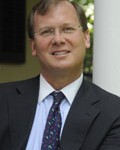 Michael Lee Stallard is the co-founder and president of E Pluribus Partners, a consulting firm based in Greenwich, Connecticut Michael’s work has also been featured in the media including The Wall Street Journal, The New York Times, Human Resource Executive, The Economic Times (India), Developing HR Strategy Journal (UK), Rotman (Canada) and Fox Business Now.
Michael Lee Stallard is the co-founder and president of E Pluribus Partners, a consulting firm based in Greenwich, Connecticut Michael’s work has also been featured in the media including The Wall Street Journal, The New York Times, Human Resource Executive, The Economic Times (India), Developing HR Strategy Journal (UK), Rotman (Canada) and Fox Business Now.
Jason Pankau is a leading authority on leadership and teams as they relate to employee and customer engagement. Jason’s clients have included Johnson & Johnson, NorthwesternUniversity, UBS and several hedge funds.
Top down, bottom up, lateral and inside-out communication have all been around forever. But the arrival of social technologies is dramatically changing the way people communicate with each other, their friends and their colleagues both inside and outside the corporate walls.
Is it already out-of-control? Or are their powerful ways to support and channel this “social communication” so that it builds positive synergy around your brand, focuses organizational activity, and reduces friction in the path of change and performance.
This webinar explores this brave new world of social communication and takes a hard look not only at the tools–but at strategies and stories of how this works in reality. Our three experts will address the topic from the vantage point of
- “stakeholder re-engagement” (mutual recognition of changed business climate and required new ways of working)
- “brand advocacy” (the essential steps to identifying internal advocates, develop guidelines and training, and how to create an integrated communications strategy that gives your employees a reason to live and socialize your brand)
- Technology (moving from facilitating and growing relationships likeTwitter to fundamentally changing tone and content of internal dialogue)
What You Will Learn:
- How to identify your organization’s key social communicators and how to best engage them
- Starting a pilot, nurturing it, and making the case for broader implementation
- Encouraging and managing participation
- Identifying what if any extra technologies to use
- Processes for keeping your organization’s values and messages present
- Figuring out the metrics
Who Should Attend
This webinar is primarily aimed at those in the early stages of implementing or learning about social media, although it will also help more advanced practioners to focus their efforts. It is especially suitable for:
- Small and mid-sized business leaders
- Corporate executives who are new to social media
Mike Klein–The Intersection/CommScrum is a Brussels-based strategic communications pro specializing in social, network and tribal communication in organizations and in the public sphere. An MBA graduate of London Business School, Mike is a partner in Commscrum, a blog for alternative voices in the internal and business communications world. Mike was a political campaign manager for state and local candidates and initiatives in the United States from 1987-1996, and has worked for Shell, Cargill, easyJet Airlines, the US Department of Transportation and Smythe Dorward Lambert in ten years as an internal communicator.
 Elizabeth Lupfer is Senior Manager, Web Technologies and Interactive Media, at Verizon, where she drives the employee experience of the corporate intranet. Elizabeth is a member of Verizon’s Social Media Council, and advocates the use of social media within internal and external communication channels to drive employee engagement — recently working with colleagues to launch the pilot of Verizon’s Social Media Ambassador program. Prior to Verizon, Elizabeth worked in Corporate Employee Communications for AOL, where she honed her passion for leveraging web technologies to support integrated communications efforts. Elizabeth also authors strategies to drive engagement, collaboration and productivity through the judicious use of social media tools through her blog,The Social Workplace.
Elizabeth Lupfer is Senior Manager, Web Technologies and Interactive Media, at Verizon, where she drives the employee experience of the corporate intranet. Elizabeth is a member of Verizon’s Social Media Council, and advocates the use of social media within internal and external communication channels to drive employee engagement — recently working with colleagues to launch the pilot of Verizon’s Social Media Ambassador program. Prior to Verizon, Elizabeth worked in Corporate Employee Communications for AOL, where she honed her passion for leveraging web technologies to support integrated communications efforts. Elizabeth also authors strategies to drive engagement, collaboration and productivity through the judicious use of social media tools through her blog,The Social Workplace.
 Georg Kolb is Business Director at communication software firm straightto. Prior to straightto, his roles included social media director and key accounter at Ketchum Pleon Germany, chief of innovation at Text 100 Global PR in New York, and Managing Consultant for the same firm’s German business. Georg was a lecturer for international PR at the Munich University and for PR on the Internet at the Bavarian Academy for Advertising and Marketing. He is also a regular speaker on the future of communications and blogs on his Corporate Communications Compass.
Georg Kolb is Business Director at communication software firm straightto. Prior to straightto, his roles included social media director and key accounter at Ketchum Pleon Germany, chief of innovation at Text 100 Global PR in New York, and Managing Consultant for the same firm’s German business. Georg was a lecturer for international PR at the Munich University and for PR on the Internet at the Bavarian Academy for Advertising and Marketing. He is also a regular speaker on the future of communications and blogs on his Corporate Communications Compass.
The reality is that everything you do and say communicates something. The most successful leaders know that communication is the competency most critical to moving businesses forward, is the best defense in managing change and difficult situations, and is the driving force in engaging others. Since you are always communicating – you might as well be great at it. This luncheon is a unique opportunity to learn winning strategies you can use every day and engage in thought-provoking discussion so you can differentiate yourself, elevate your leadership impact, and accelerate business results. David Grossman will share practical insights, best practices, and proven tools to help top leaders differentiate themselves, including:
- The three fundamental truisms every leader must understand
- Three myths leaders believe, and that every communicator must address head-on
- The most common traps leaders face
- The Great Eight communication basics; What great leaders do
- David Grossman ABC, APR, Fellow PRSA, President & Principal thoughtpartner™ of the Grossman Group
 I’m president and founder of The Grossman Group, an award-winning Chicago-based communications consultancy focusing on organizational consulting, strategic leadership development and internal communications. With a roster of Fortune 500 clients including Cisco Systems, Heinz, Intel, Lilly, Lockheed Martin, McDonald’s, WellPoint and Virgin Atlantic, we work at the highest levels within organizations to utilize communications as a strategic business tool to help engage employees and drive performance. I’ve spent my entire career helping leaders use communications to be more successful and after working with leaders for more than 20 years, I’ve seen a lot. Many of my clients have been telling me that that I should write a book that encapsulates the insights, lessons and strategies I’ve gained over the years so that other leaders — from seasoned veterans to first-time managers — could benefit. This is finally coming to fruition and my book, “You Can’t Not Communicate: Leadership Solutions that Power the Fortune 100” was published in late 2009. Prior to founding The Grossman Group in 2000, I was director of communications for McDonald’s, where I helped to evolve what was the Publications Department into a world-class internal communications function and pioneered the “agency model,” building a leadership communications support function for the company’s senior executives. I also teach the only graduate-level course in internal communications in the U.S. at Columbia University. I’m thrilled to a part of the Communitelligence community and look forward to sharing ideas and learning from all the great minds that are gathered here.
I’m president and founder of The Grossman Group, an award-winning Chicago-based communications consultancy focusing on organizational consulting, strategic leadership development and internal communications. With a roster of Fortune 500 clients including Cisco Systems, Heinz, Intel, Lilly, Lockheed Martin, McDonald’s, WellPoint and Virgin Atlantic, we work at the highest levels within organizations to utilize communications as a strategic business tool to help engage employees and drive performance. I’ve spent my entire career helping leaders use communications to be more successful and after working with leaders for more than 20 years, I’ve seen a lot. Many of my clients have been telling me that that I should write a book that encapsulates the insights, lessons and strategies I’ve gained over the years so that other leaders — from seasoned veterans to first-time managers — could benefit. This is finally coming to fruition and my book, “You Can’t Not Communicate: Leadership Solutions that Power the Fortune 100” was published in late 2009. Prior to founding The Grossman Group in 2000, I was director of communications for McDonald’s, where I helped to evolve what was the Publications Department into a world-class internal communications function and pioneered the “agency model,” building a leadership communications support function for the company’s senior executives. I also teach the only graduate-level course in internal communications in the U.S. at Columbia University. I’m thrilled to a part of the Communitelligence community and look forward to sharing ideas and learning from all the great minds that are gathered here.
